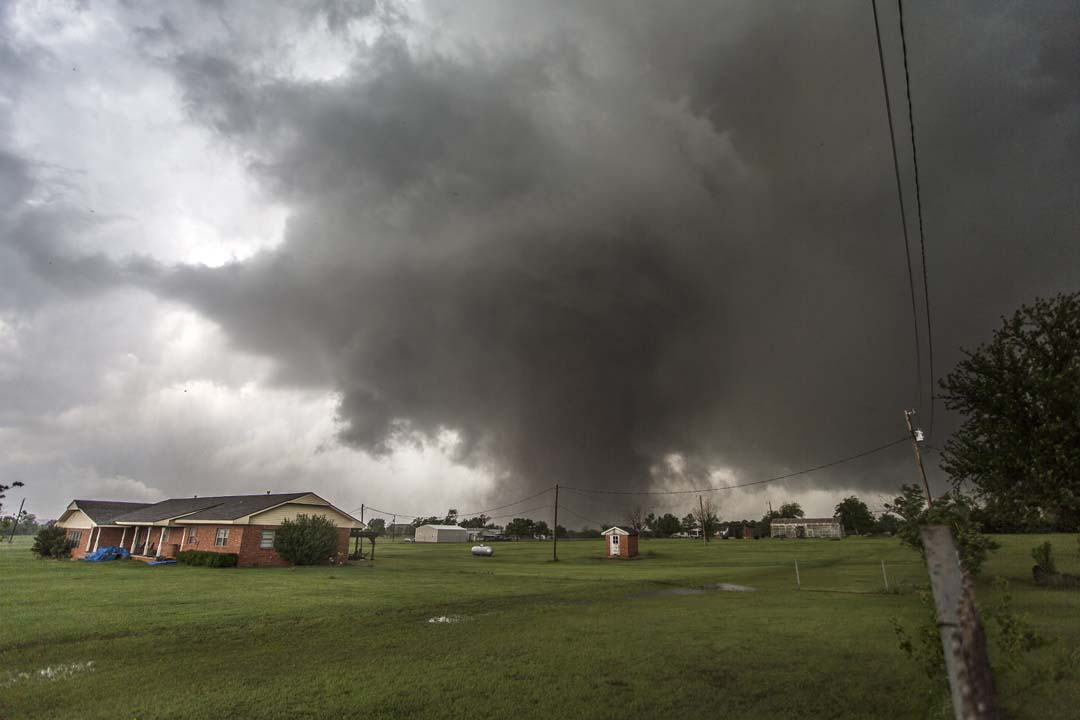TORONTO — In 2014, the United States enjoyed a relatively quiet start to the year, tornado-wise. Preliminary numbers show that by the end of March, the country had seen 68 tornadoes. For comparison, in 2013, they had 132 preliminary reports.

But if forecasters thought 2014 was a slow start, they were in for a surprise this year: so far there have been only 28 reports of tornadoes.
There hasn’t been even one in the month of March. Not even a tornado watch. And that is unprecedented.
READ MORE: Tornadoes: The myths and the facts
And so far there have only been four tornado watches issued by the Storm Prediction Center (SPC) in Oklahoma.
“We should normally be around 60,” said Greg Carbin, Warning Coordination Meteorologist with the SPC.
“I hestiate to say this, because the long-term record is relatively short,” said Greg Carbin. “But with respect to what we do, in terms of modern forecasting at the Storm Prediction Center, we are in uncharted territory with respect to the last 50 years in terms of how quiet it has been.”
The next fewest watches issued comes in at 11 in 1982 and 1985.
And while you might think that the cold weather is to blame for the low tornado count this year, Carbin said it’s not that easy to say.
“While there is a connection, it’s not the only story,” he said. “That certainly plays a role, but we’re not entirely certain how much of a role.”
While there is a correlation of lack of tornadoes to below-normal temperatures in the winter months, Carbin says that it’s a weak one. Instead, other factors such as the El Nino-Southern Oscillation (ENSO) come into play. Simply put, the ENSO is the El Nino and La Nina phenomena. El Nino is characterized by usually warm temperatures in the equatorial Pacific Ocean, while La Nina is an unusual cooling. There are worldwide consequences to both.
For example, La Nina is known to increase tornadoes in particular areas in the United States such as from Texas, Arkansas to Tennessee Valley. El Nino years can produce tornadoes in along the Gulf coast in Florida. But this year, the weak El Nino didn’t do much.
So this means, though the tornado season has been unusually quiet, meteorologists are busy trying to determine the causes for such a quiet year, as well as looking to the months ahead, when tornado season typically starts to ramp up.
“There’s something going on. It’s highly unusual, but we don’t know exactly what it is,” Carbin said.
It’s interesting to note that tornadoes have been declining since the country’s worst tornado season, 2011.
That year there were 1,692 tornadoes. And though it was tied in number with 2008, the deaths were staggering: 551.
But if we’re looking at early numbers to be an indicator for the rest of the year, it’s not that simple.
Just look back at 1982, the year that had one of the lowest number of watches issued. The year ended with more than 1,000 tornadoes reported.
“And just like the stock market, you can’t base future performance on past performance.”
But long-term forecasting isn’t the greatest tool for forecasting tornadoes. The fact is, a pattern could set itself up within a few weeks and produce severe weather. So while the next week doesn’t look to be active, Carbin said that it could pick up quickly.
READ MORE: Top 10 deadliest tornadoes in U.S.
“There’s no time to let our guard down,” he sad. “It really only takes a few days. This time of year can bring about changes quite quickly.”
In the meantime, while meteorologists look ahead, they also look behind. They seek answers as to why it’s been such a slow season, which helps them better understand the evolution of severe weather outbreaks.
“There are a lot of unanswered questions about why is it doing this, and if we can expect it to continue. And we don’t have good answers for that.”




Comments